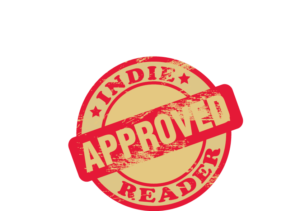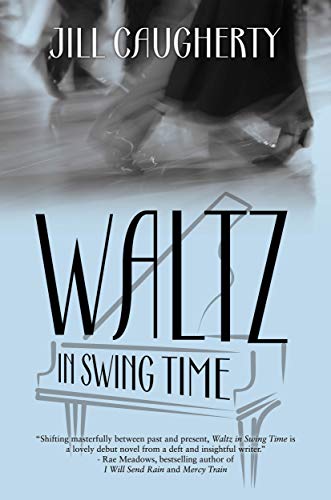
WALTZ IN SWING TIME received a 4+ star review, making it an IndieReader Approved title.
Following find an interview with author Jill Caugherty.
What is the name of the book and when was it published?
WALTZ IN SWING TIME – published April 23, 2020 by Black Rose Writing
What’s the book’s first line?
At any moment, one of the women who spoon-feeds me my pills will stop by my unit and find I’m gone.
What’s the book about? Give us the “pitch”.
Growing up in a strict Utah farm family during the Great Depression, Irene Larsen copes with her family’s hardship by playing piano. Even after an unthinkable tragedy strikes, Irene clings to her dream of becoming a musician. When a neighbor’s farm is foreclosed, Irene’s brother marries the neighbor’s daughter, who moves in with the Larsens and coaches Irene into winning leading roles in musicals. Clashing with her mother, who dismisses her ambition as a waste of time and urges her to become a farmer’s wife, Irene leaves home.
During a summer gig at Zion National Park, where Irene sings in a variety show for Depression-weary tourists, she meets professional dancer Spike, a maverick who might be her ticket to a musical career. But ultimately she must decide whether pursuing her dream justifies the steep price of losing her home and family.
Alternating between Irene’s ninetieth year in 2006 at an assisted living home and her coming-of-age in the thirties, Waltz in Swing Time is a poignant tale of mother-daughter relationships, finding hope amidst loss, and forging an independent path, against all odds.
What inspired you to write the book? A particular person? An event?
The book is based loosely on my maternal grandmother, a woman whom I admired greatly for her inner strength and unusual choices, and who came of age during an often-overlooked period in history, the Great Depression.
What’s the main reason someone should really read this book?
It takes place during the Great Depression, a period of history often overlooked in literature. Now, coincidentally, the parallels between our current times and the Great Depression are striking – the economic inequality, job losses, foreclosures, high unemployment and widespread poverty. Today, as in then, music, literature, and art remain important creative outlets and havens. Perhaps, too, the story about how a young woman survived through difficult times and pursued her dream might inspire hope in readers.
What’s the most distinctive thing about the main character? Who-real or fictional-would you say the character reminds you of?
Irene Larsen’s ambition and determination set her apart from many of the other characters in the book. Despite her mother’s criticism and strong pressure to settle down and marry a farmer, she resists, and pursues her dream of becoming a musician. In this respect, she reminds me of my maternal grandmother, the real life person on whom her character is based.
When did you first decide to become an author?
At age six, after reading Laura Ingalls’ Little House in the Big Woods and Little House on the Prairie books with my mother, I decided I wanted to be a writer. It took another forty-five years before I could claim that title.
Is this the first book you’ve written?
No. As a child and adolescent, I wrote three or four novellas, and in my twenties, I wrote a semi-autographical book that I ultimately shelved. However, this is the first book I’ve written that has been published.
What do you do for work when you’re not writing?
I’m a Product Manager in the high tech/IT industry.
How much time do you generally spend on your writing?
I typically spend about eight to ten hours a week – usually on the weekends and sometimes in the weekday evenings or early mornings.
What’s the best and the hardest part of being an indie?
The best part is that my publisher gave me extensive autonomy over the title of the book, cover ideas, and edits. The hardest part is not being represented by an agent and therefore struggling to gain recognition and publicity for my book in the sea of millions of other novels.
What’s a great piece of advice that you can share with fellow indie authors?
Be persistent, and don’t get discouraged. When you are rejected, leverage any advice you might also receive. Take a few days or weeks to reflect upon it, and then, if it resonates, use it to your advantage. Decide how you can incorporate the suggestions for improvement into the story in such a way that it strengthens the character development, plot, pacing, dialogue, or description.
Would you go traditional if a publisher came calling? If so, why?
My publisher, Black Rose Writing, is a small and independent firm who has been ideal for launching my first book. They’ve been supportive and helpful, giving me all the creative latitude I desire and not balking at the many content and copy edits I made during the process. However, down the line, I would choose a traditional (larger) publisher if it meant my book could gain wider circulation and promotion and more readers.
Is there something in particular that motivates you (fame? fortune?)
My passion for writing has always been my greatest motivation. Creating protagonists in a fictional world is like slipping into a different character on a stage, trying out a new personality and setting, while remaining true to the human emotions and motivations that most of us share.
Which writer, living or dead, do you most admire?
I admire many, including Khaled Hosseini, John Steinbeck, Chae-Rang Lee, Elizabeth Strout, and Wallace Stegner.
